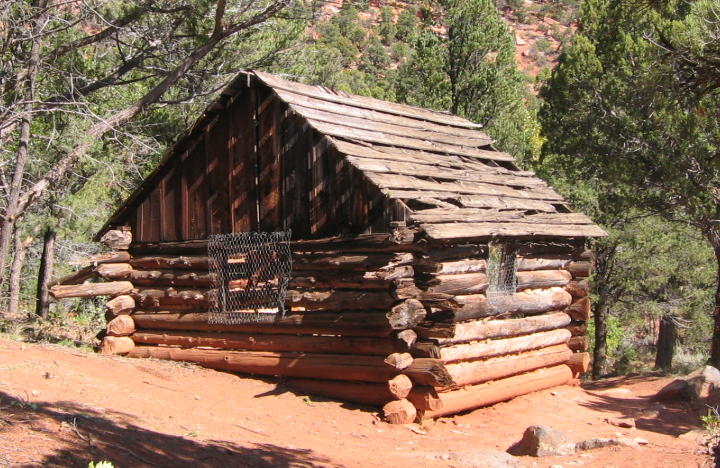
WASHINGTON COUNTY HISTORICAL SOCIETY (Washington County, Utah)
GUSTIVE O. LARSON CABIN
Kolob Canyon Section of Zion National Park
HISTORY
When Gustive O. Larson moved to Cedar City UT as a new Seminary teacher in 1927, he was adopted by the Branch Agricultural College (BAC) faculty and taught a couple of college level courses there. He became acquainted with Arthur R. Fife who was the BAC Geologist and the City Engineer. Fife was also in the local Stake Presidency under Pres. William R. Palmer. Fife took Larson out with him surveying for snow levels and exploring the nearby mountains.In the Spring of 1930, Arthur Fife invited Gus Larson to visit the area around Dry Creek (now called Taylor Creek) near the Kolob Peaks in Northern Washington County. It was unsurveyed Government property about twenty miles south of Cedar City, but had been grazed to some extent by nearby livestock ranchers. As a result, vegetation was considerably thinner than it is now. Access was by horses, brought over from New Harmony and picked up at the Pollock farm along Highway 91 (after the Pollocks abandoned their house in 1934, they parked on the east side of the highway, south of the bridge). In 1929, William R. Palmer had homesteaded and built a cabin not far from the highway. Larson and Fife decided to homestead an area upstream from there. Larson chose a location two miles up the stream on a rise across the creek from the second high peak. He homesteaded 160 acres. Fife chose to locate his cabin a mile farther up the Middle Creek canyon. He also homesteaded 160 acres.
Larson was busy with a 5-week course up at BYU during the Summer of 1930 and so they did not build their cabins until late in the summer. Before the start of the school season, Larson and Fife cooperatively erected their log cabins, 12 x 24 feet and covered with wood shingles. They cut logs in the canyon and dragged them to the construction sites with horses. The logs were caulked with a sand plaster. Lumber for roofing and flooring as well as roofing shingles was brought in from Cedar City and hauled up the creek bed with considerable difficulty. A cast iron stove was hauled up on a horse-drawn sled. The cabin was completed during the summer of 1931. The cabins were occupied during the next few summers, according to arrangements recorded in the land office in Salt Lake City. Their families joined them sporadically. Larson's wife, Virginia, enjoyed overnight visits to the cabin and exploring the area by horseback.
In 1931, Larson helped Fife make a survey of their locations. And in the Spring of 1932, the Government completed its survey of the whole area. Except for the prior homestead claims, the whole region was withdrawn from entry. Larson and Fife continued improving their claims. They put up fences in the Summers of 1932 and 1933. Since the withdrawal of further lands from entry in the area, the Cedar City Chamber of Commerce became interested in having a road constructed into Little Kolob Canyon. Gus Larson was also promoting that idea in 1935. The road was actually put in some time later and now exists as a nice paved road.
Fife dropped out of the homesteading venture in 1934 or 1935 when he accepted an appointment to the Navajo Reservation in the soil erosion service of the United States Department of the Interior. In 1936, Larson was called on a mission for the LDS Church and served as President of the Swedish Mission. He and his family lived there until the outbreak of the Second World War in 1939. In 1937, the Government established the Kolob National Monument, including the Dry Creek area. It became a part of Zion National Park in 1956. As a matter of practice, the Kolob Canyons section of Zion National Park was managed by the superintendent of the Cedar Breaks National Monument until sometime around the 1980s or 1990s.
After coming back from Sweden, the Larsons went up to visit the cabin some time in October of 1939. They found out that the Government had declared it a part of the new Kolob National Monument. Larson tried to assert his claim to the homestead, but found he hadn't lived on it long enough. Larson didn't give up his claim immediately, but still treated the land as his own. On one trip up there in 1940, Gus Larson and his son, Olle, went up to get one of the two cots that were originally in the cabin (one is still there!). They also got a bush to bring back to their home in Cedar City as they often did while homesteading. He was challenged by a Forest Service man, but successfully argued the property was his. Larson never went back up. His claim was officially denied on July 3, 1940. He appealed to the Department of the Interior on August 19 for a review of the decision. But in April of 1941, Larson received his final denial based on not having housed his family on the property during the entire five summers of occupation. Even after giving up their claim, Olle used to go up with his friends during high school and college and occasionally thereafter.
The National Park Service has preserved the Larson cabin. It is in a "wilderness area", so there are a lot of restrictions on what can be done. In the summer of 2009, NPS personnel used hand tools to make some substantial repairs. The sagging floor was braced up and some trash was cleaned out from under the floor. A new door was installed (it has a window for viewing where the long lost original door had just five solid planks). And brush was cleared away from the surrounding area.
BIOGRAPHY
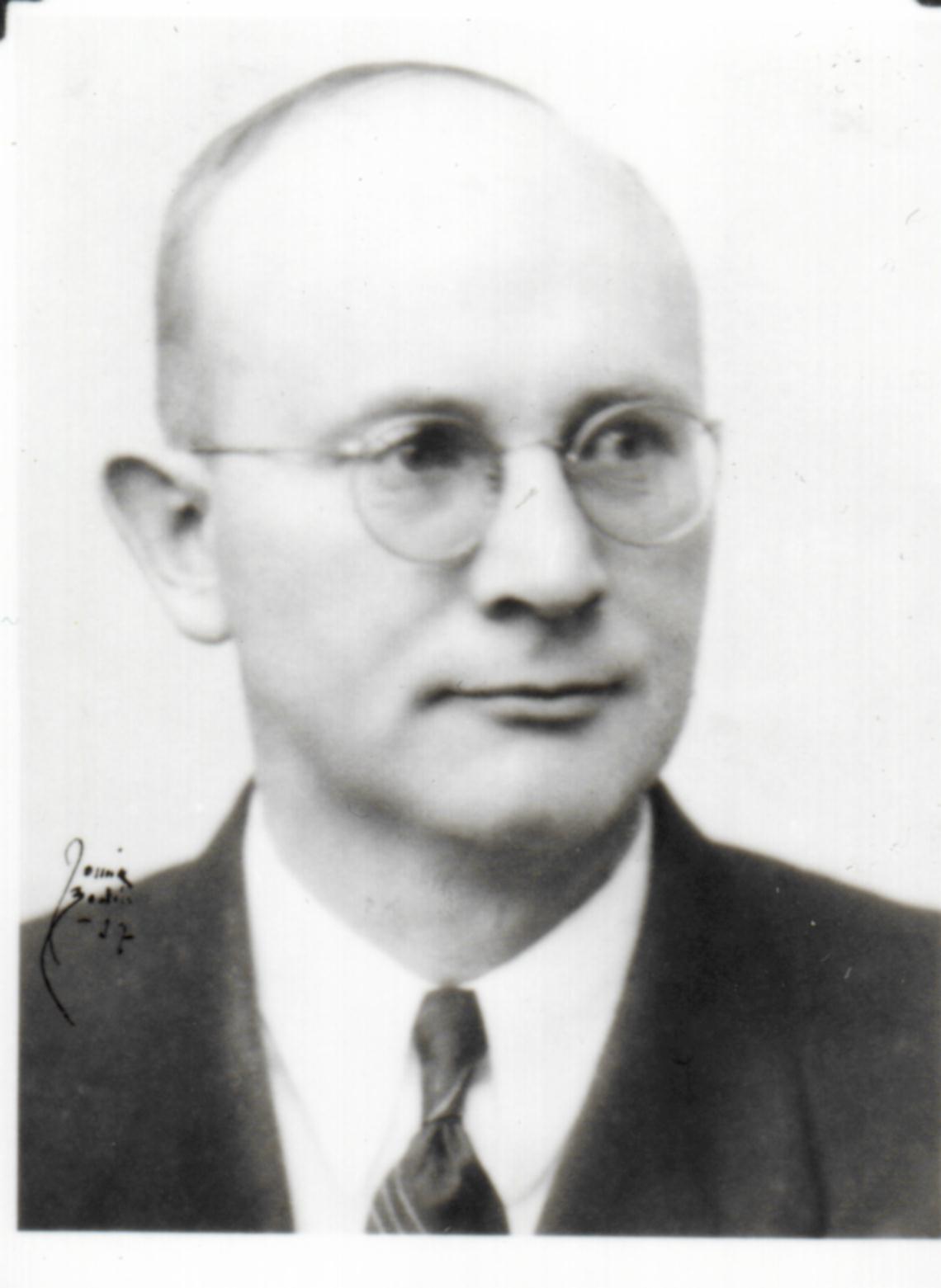 Gustive O. Larson (Gus) was born in 1897 in Holladay Utah to Swedish immigrant parents.
He graduated from the University of Utah in 1920 with a B.A. degree in History.
He taught at Weber College during the 1920-1921 school year, after which he went on a 3-year Mormon Mission to California and Arizona.
After returning in 1924, he took a position as Principal of the LDS Seminary in Richfield Utah.
There he met and married Virginia Bean in early 1926.
In 1927, he earned a Masters degree from the University of Utah and took a job as Principal of the LDS Seminary in Cedar City.
There he became the first Director of an LDS Institute of Religion.
He and Virginia had three children, Gustav Olof (Olle), Patricia (Patty, Pat), and Tanja Virginia.
They had a home in Cedar City, but begining in 1930 Gus Larson started homesteading the land up in Kolob Canyon.
From 1936 to 1939, the family went over to Sweden where Larson served as President of the LDS Swedish Mission.
They returned to Cedar City where they remained until Larson took a position at BYU in 1954.
There he was a Professor of Religion and History until retiring in 1972.
In the spring of 1974 he received an honorary doctorate from Southern Utah State College.
He passed away in 1978.
Gustive O. Larson (Gus) was born in 1897 in Holladay Utah to Swedish immigrant parents.
He graduated from the University of Utah in 1920 with a B.A. degree in History.
He taught at Weber College during the 1920-1921 school year, after which he went on a 3-year Mormon Mission to California and Arizona.
After returning in 1924, he took a position as Principal of the LDS Seminary in Richfield Utah.
There he met and married Virginia Bean in early 1926.
In 1927, he earned a Masters degree from the University of Utah and took a job as Principal of the LDS Seminary in Cedar City.
There he became the first Director of an LDS Institute of Religion.
He and Virginia had three children, Gustav Olof (Olle), Patricia (Patty, Pat), and Tanja Virginia.
They had a home in Cedar City, but begining in 1930 Gus Larson started homesteading the land up in Kolob Canyon.
From 1936 to 1939, the family went over to Sweden where Larson served as President of the LDS Swedish Mission.
They returned to Cedar City where they remained until Larson took a position at BYU in 1954.
There he was a Professor of Religion and History until retiring in 1972.
In the spring of 1974 he received an honorary doctorate from Southern Utah State College.
He passed away in 1978.
LOCATION
Take I-15 to Exit 40 and check in at the Kolob Canyons Visitor's Center. 1.9 miles up the Kolob Canyons Scenic Drive is the Taylor Creek Trailhead on the left (east) side of the road. From the trailhead, descend the log steps down to Taylor Creek. Turn right and head upstream (east). There is a well-worn trail along the Middle Fork. The trail crosses the stream 16 times over the next 1.2 miles. Just before the confluence of the North Fork and Middle Fork of Taylor Creek, there is a spur trail on the left (north) that goes a short distance up to the Larson cabin. The altitude there is 5,645 feet above sea level.37° 27' 44.89" North Latitude, 113° 11' 3.14" West Longitude
37.4625° North Latitude, 113.1841° West Longitude
5,645 feet (1,721 meters) MSL
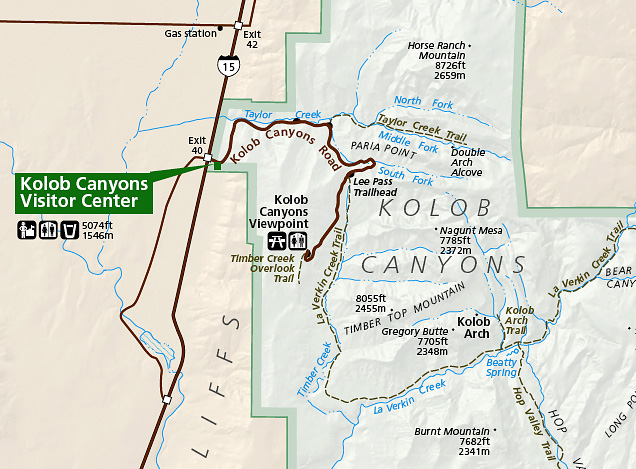
PHOTOS
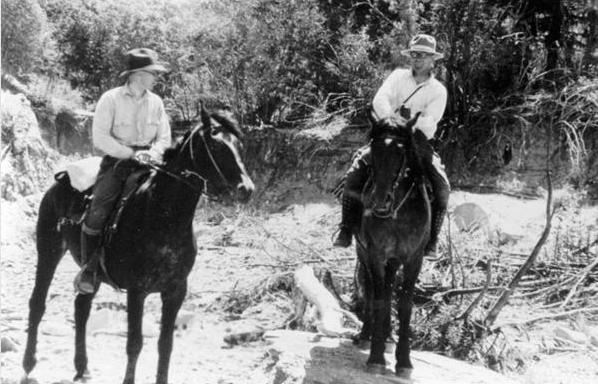
Gus Larson (left) and Arthur Fife (right) on horseback exploring the Dry Creek area in 1930
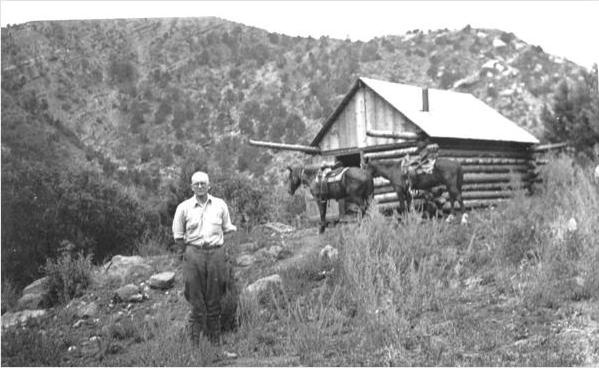
Gus Larson in front of his newly built cabin in 1930 or 1931
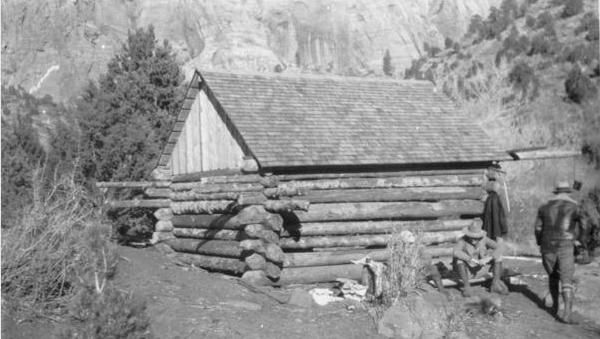
Southwest corner of the newly built Larson cabin
The windows had not yet been cut out
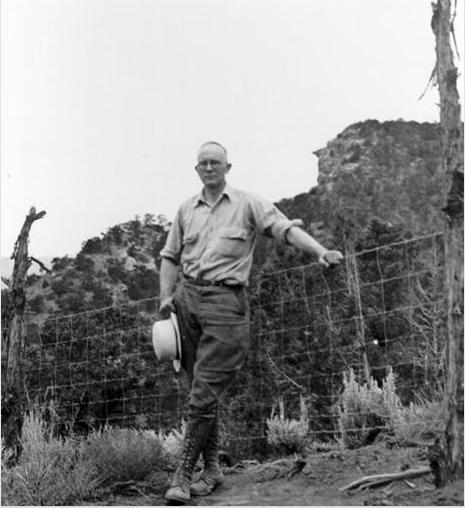
Gus Larson with his new fence around 1932 or 1933
He hoped to hold in some cattle, but never raised pigs as some reports claimed
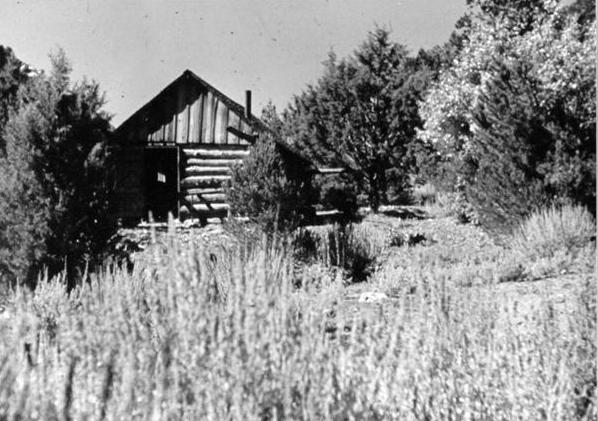
Front of the Larson cabin in 1939
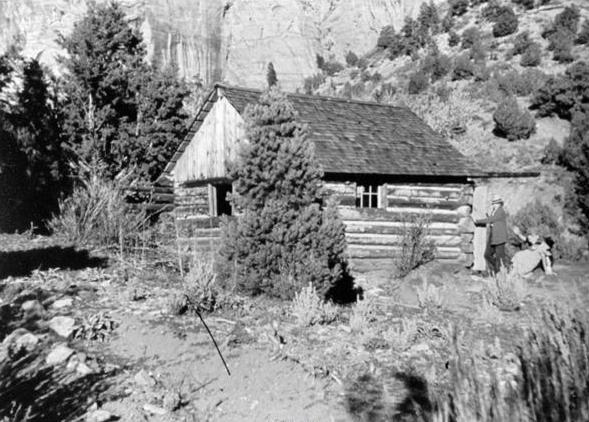
Southwest corner of the Larson cabin in 1939
Note that there are now windows on the south and west walls
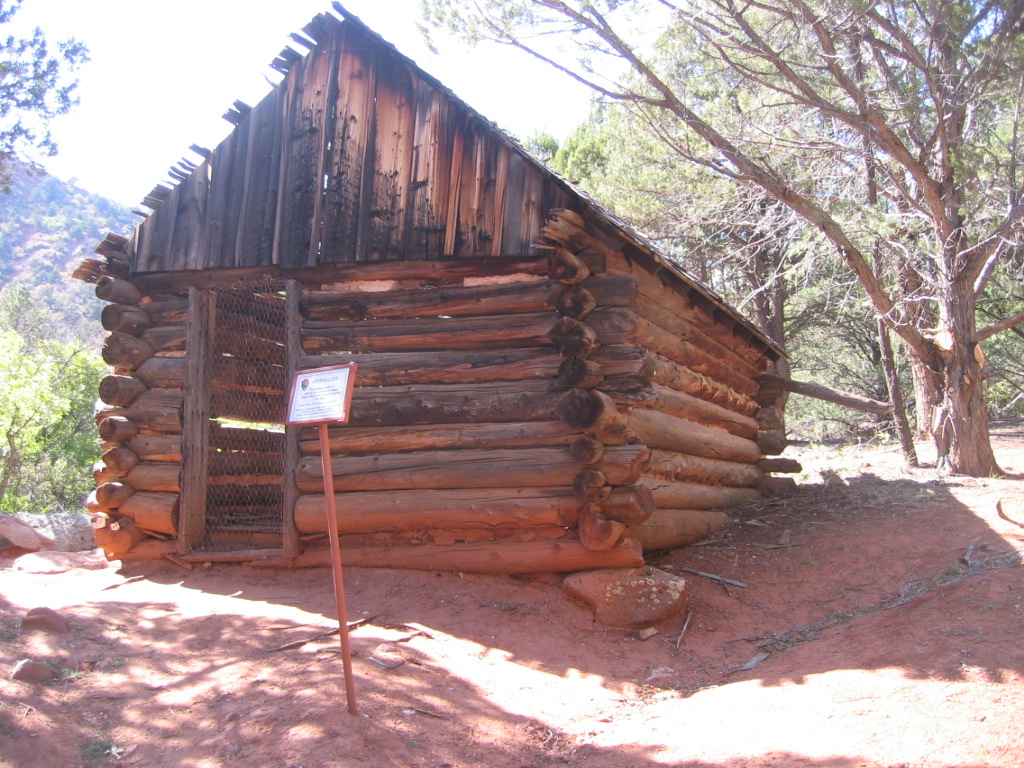
Front of the Larson cabin in 2008
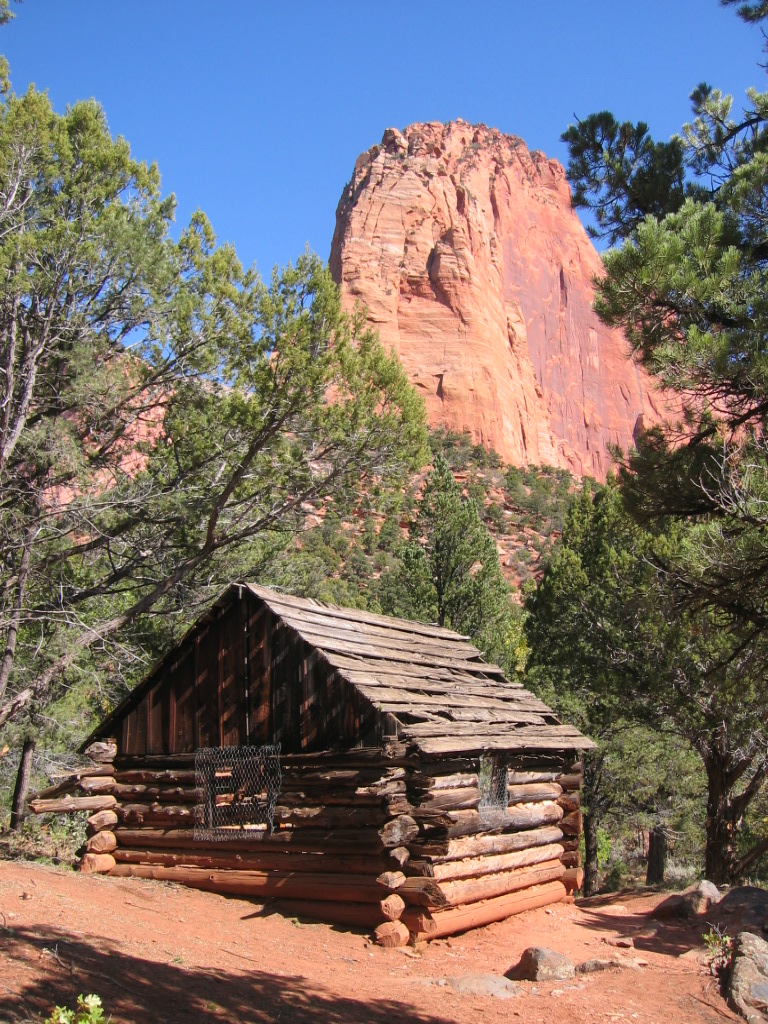
Southwest corner of the Larson cabin in 2008
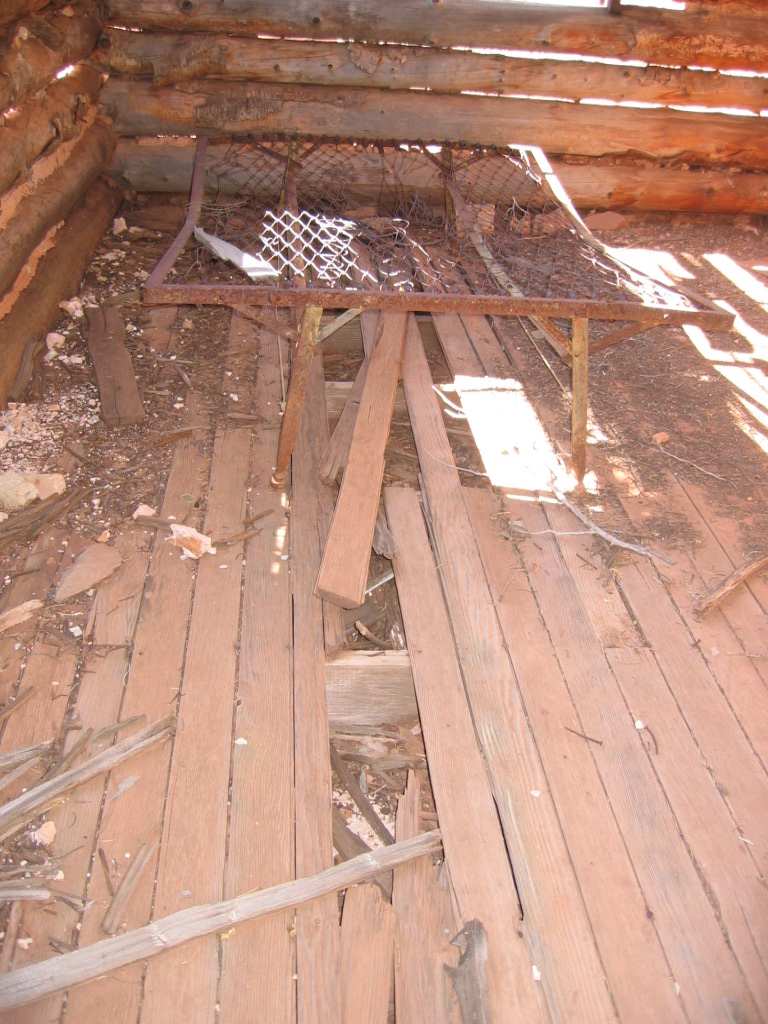 Floor and bed |
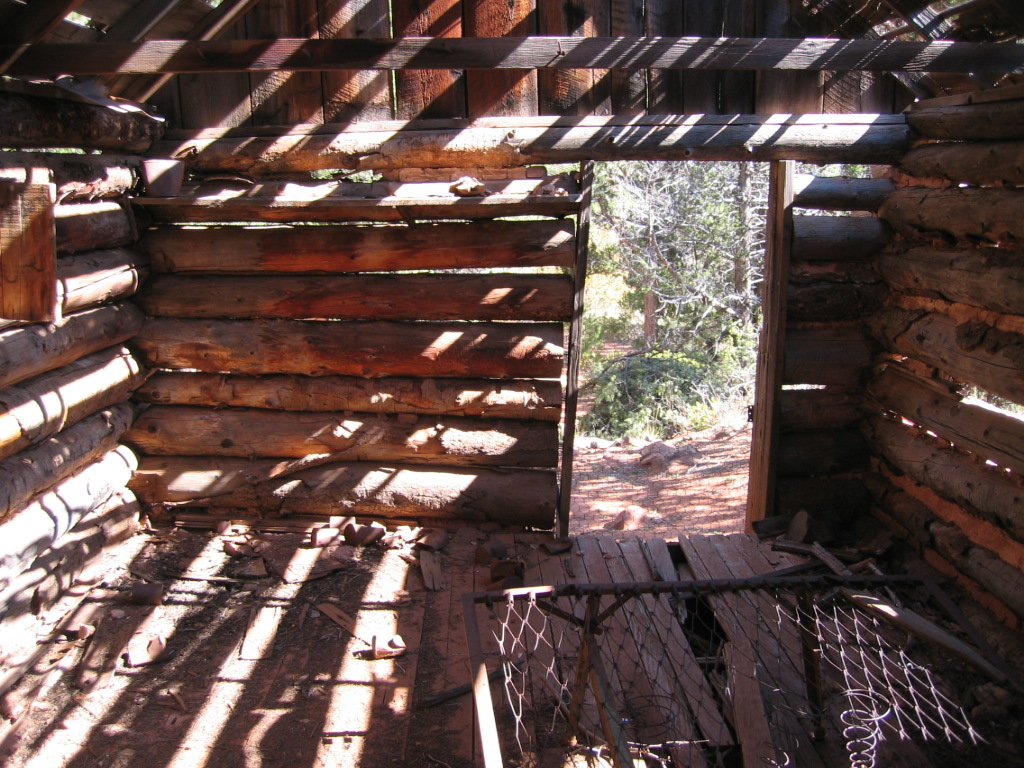 Bed and front door |
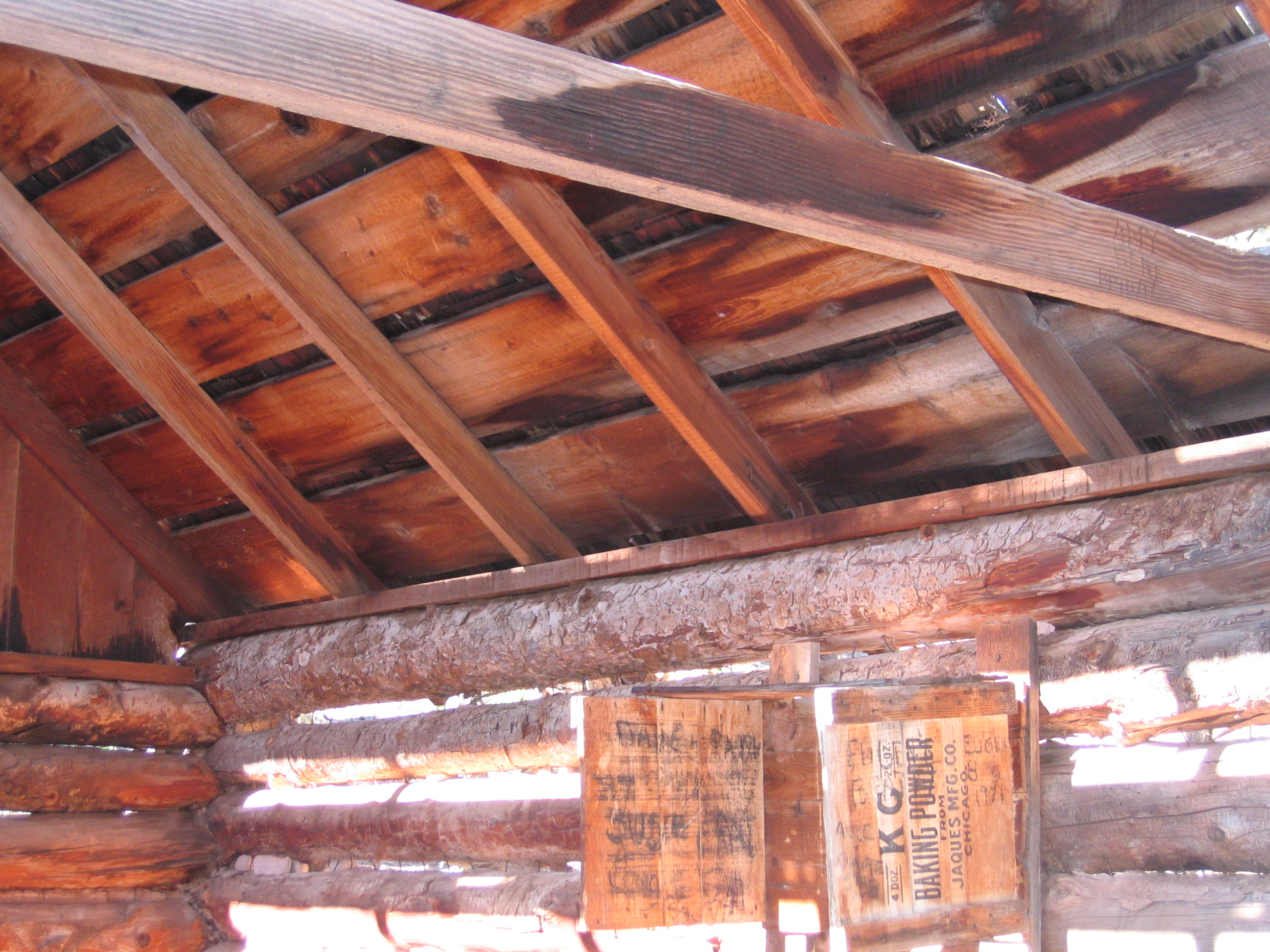 Ceiling rafters and box shelf |
WCHS photos:
WCHS-04594 Photo of a sign in front of the old Larson Cabin in Zion National Park
WCHS-04595 Photo of the front of the old Larson Cabin in Zion National Park
WCHS-04596 Photo of the inside of the old Larson Cabin in Zion National Park
WCHS-04597 Photo of the inside of the old Larson Cabin in Zion National Park
WCHS-04598 Photo of the north side of the old Larson Cabin in Zion National Park
WCHS-04762 Photo of the Larson Cabin in Zion National Park on May 14, 2021
REFERENCES
Southern Utah University, Special CollectionsGustive O. Larson's papers and photographs were donated to SUU by Gus' son, Dr. G. Olof Larson. They have been cataloged and most of the photos put online at
http://archive.li.suu.edu/archive/search?s=9105104&t=d